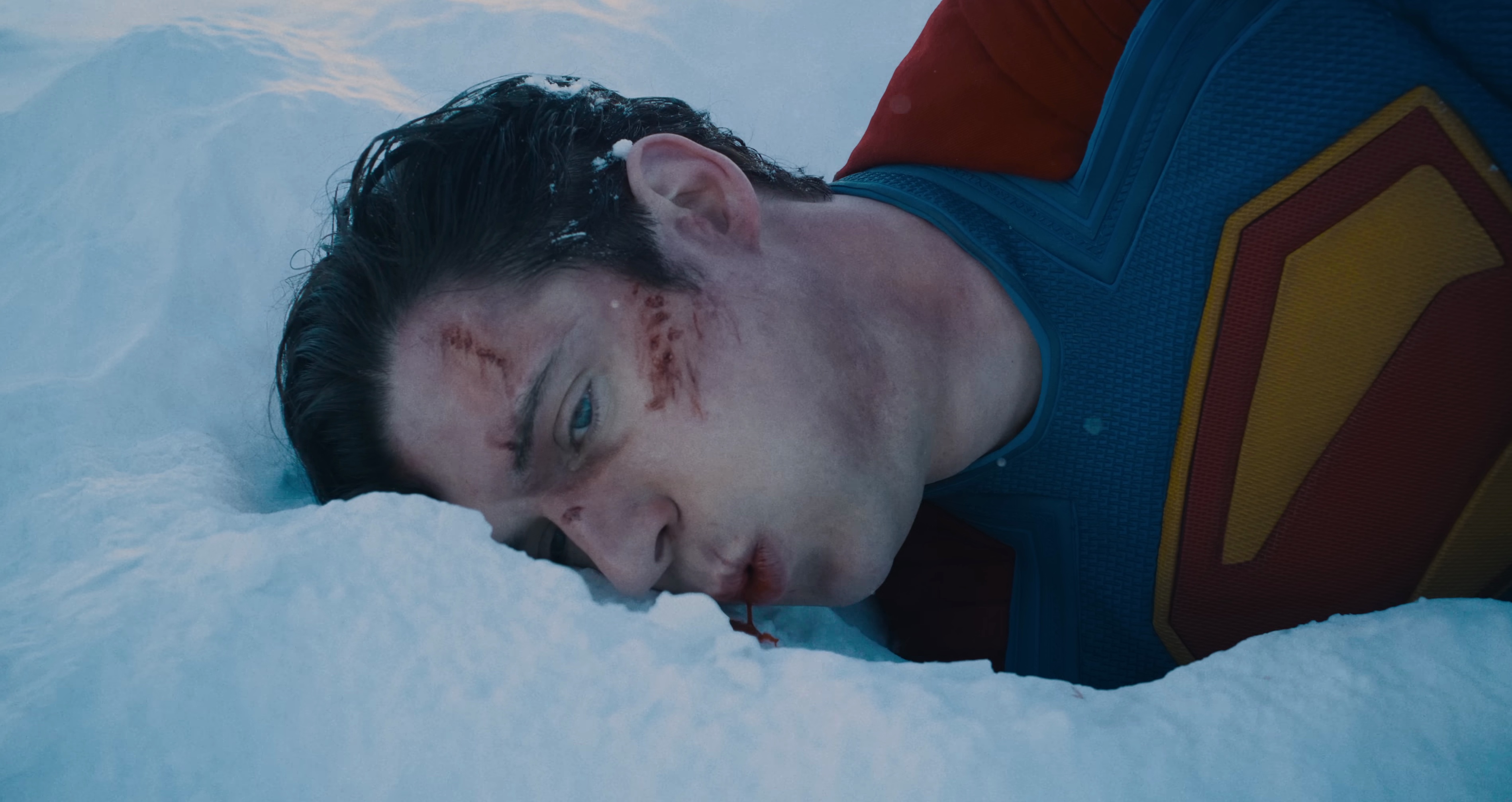Over a nearly 50-year career, Stephen King has done plenty to earn his title as the American master of horror — but his 60-plus novels to date also spend a lot of time in the arenas of fantasy, suspense, crime, and drama. Not all Stephen King novels are scary, really, which isn’t at all a complaint: Plenty of them are breathlessly and compulsively readable without being the kind of book that pushes you to sleep with the lights on after you put it down for the night.
King has moved more and more toward suspense as he’s gotten further into his career. His 2023 book Holly is a sort of Columbo-esque murder mystery where the reader sees one of the crimes upfront, and spends the rest of the book waiting to see how the title character (Holly Gibney, of Mr. Mercedes and several other King novels and novellas) will solve the crime and what will happen when she does. It’s compelling, tense, and thrilling, and the details of that crime are memorably grotesque — but it isn’t a scary book.
Some of King’s purer horror novels, on the other hand, are designed to keep readers up at night. So don’t mistake the following for a rundown of the best Stephen King novels — that would be a completely different list. This is just a ranking of his scariest books, the ones that feel most like waking nightmares in the best way possible.
Honorable mention: Revival (2014)
:no_upscale()/cdn.vox-cdn.com/uploads/chorus_asset/file/25045775/SKRevival.jpg)
An awful lot of Revival isn’t scary. King fans might even wonder what he’s doing with this book, which seems oddly casual and methodical for most of its run — a series of check-ins between a musician and a significantly older preacher, running from the musician’s childhood to the preacher’s deathbed. But then there’s the ending, which finally pays off what’s mostly seemed like a strange literary exercise throughout. Suddenly, King goes from an almost clinical study of an odd obsession to one of the most terrifying short sequences he’s ever written, a sequence with chilling, stomach-churning implications that tap into the darkest corners of Lovecraftian cosmic dread. This isn’t a nerve-wracking novel, for the most part, but that ending almost feels like a jump scare in the way it comes after a long and comparatively mild buildup, then hits as hard as possible.
10. Bag of Bones (1998)
Longtime King readers will be well aware of how often he puts familiar little bits of himself into his work, whether he’s setting stories in his home state of Maine, addressing the kind of substance abuse and dependency he worked through earlier in his career, or writing about writers trying to write. Bag of Bones is the latter, but unlike other King books about writers, it barely has a foot set in the real and plausible — this is a purely supernatural book. This ghost story feels a bit like his spin on The Ring, not in terms of the mechanics of hauntings, but in terms of a protagonist tracking the lore of a spirit who’s powerful, malevolent, and coming from a justified place of fury. It’s a rapidly building novel that keeps piling on the threat, and one where every new revelation just makes the scope and intensity of the haunting more unnerving.
9. Cujo (1981)
Exactly on the other end of the reality spectrum from Bag of Bones, Cujo is a mostly plausible book that’s just about a rabid Saint Bernard turning on a few members of its local community. But while the threat is comparatively small and localized compared with many of his books, Cujo uses a lot of foreshadowing and some well-drawn characters to make the sense of threat real. Part of the fear factor in what amounts to a real-world creature feature is the viscerality of the writing in Cujo, and the clear-eyed way King lays out how even a small threat is very large to the people trying to survive it — or keep their children safe from it.
8. ’Salem’s Lot (1975)
:no_upscale()/cdn.vox-cdn.com/uploads/chorus_asset/file/25045781/SKSalem.jpg)
King’s primal vampire book has been adapted several times at this point, but none of the screen versions really get at the purity of the novel, one of King’s more memorable uses of the “threat people handle poorly, making the problem worse” trope. One of King’s simpler and more straightforward horror novels when it comes to familiar monsters with familiar abilities, ’Salem’s Lot still stands out for its grotesque details, and the way King weaponizes horror fans’ knowledge of vampire tropes, making it obvious what’s likely to happen to the more hapless human protagonists, then making things even worse for them than the foreshadowing suggested.
7. Needful Things (1991)
Needful Things is hampered by a fairly silly ending, but in the long lead-up, it’s one of King’s most indelibly crafted novels, a series of perfectly executed escalations that dives into the depths of human nature and finds us all wanting. More or less a deal-with-the-devil book that doubles as a “mysterious store where everything on the shelves is a monkey’s paw” story, this one centers on a charming newcomer to King’s beloved Castle Rock, Maine, setting — an elderly gentleman with a notions store that has whatever people need. His short-term prices are very reasonable. His long-term prices, on the other hand… Needful Things has one of King’s best blends of “scary” and “suspenseful,” as the antagonist’s designs slowly become clear, and some of King’s more sympathetic and winning characters become more and more compromised, even though they can’t let go of their “purchases.” It’s a thrill ride right up to that odd ending.
6. The Tommyknockers (1987)
One of King’s lesser-loved and more fairly overlooked novels, The Tommyknockers has a strangely bad rap for a book with such lyrical sequences and an eerie, gradually growing sense of horror. Something of an alien invasion story meets a body-snatchers story, The Tommyknockers is a long book with a slow build, and plenty to say (as King books often do) about the very separate corrosive effects of alcoholism and of power. As one of its central characters falls into the bottle and the other falls into a creeping alien corruption, The Tommyknockers builds with a particularly unnerving sense of human decay, and a story about more and more power falling into the hands of people who are less and less human with every page.
5. The Outsider (2018)
:no_upscale()/cdn.vox-cdn.com/uploads/chorus_asset/file/25045794/SKOutsider.jpg)
One of King’s few recent books that go for the jugular as often as his older work — and the only one of the Holly Gibney novels that’s more horror than crime procedural, even though it does have plenty of the latter — The Outsider begins with an indelibly grotesque crime enacted on a child, and then spends much of its plotting with Holly unpacking the nature of the creature responsible, then trying to figure out what to do about it.
Another story nominally in the body-snatcher category, The Outsider is particularly frightening because of the heavy implications King packs into the scenario. So many horror novels rely on physical isolation to put pressure on the protagonists, but The Outsider has Holly uncovering terrifying truths right in the middle of a major city, and the isolation comes from knowing no one will believe her. The Outsider operates on many different levels of terror: First, knowing something with a hunger for suffering and a taste of vulnerability is out there, hunting. Second, knowing it’s impossible to get most people to believe in it. Third, not having any idea how to fight it. King taps into all three of these levels with plenty of shocking confrontations and creepy detail, producing a novel that stands with his best in terms of scares and starts.
4. It (1986)
People frequently complain about It’s length — fair enough, it tops 1,000 pages in most printings — but the complaints feel pretty odd to King’s biggest fans, because all that length just makes this one of King’s biggest banquets in terms of setting and structure. Essentially two massive novels in one — one about a group of outcast kids fighting the horror preying on their town (Derry, Maine, this time), the other about those same kids as adults, learning that the horror has returned — It also effectively contains a whole series of short stories and novellas about that horror and how it hunts. It’s more or less a franchise packed into one story.
Sure, that scope and sprawl can get exhausting for those who can only read so many stories about a shape-changing creature worming its way into young people’s fears and finding terrible ways to kill them. But page for page, It still has some of King’s most gloriously under-the-skin writing, packed with menace and hunger in the form of something that literally turns into whatever its victims fear.
3. Pet Sematary (1983)
One of King’s most personal and close-to-home novels, Pet Sematary is heavy with portent and grief, the kind of book where you can feel a father’s anxieties seeping through every graphic, spooky page. King has said he wrote this one, then shelved it for a while out of a fear that it was just too grotesque and awful to publish. Horror fans should be glad he relented. The story of a hidden burial ground that revives the dead is one of King’s grabbiest and most breathless books, and one that both plays fair with the audience in terms of forecasting its horrors upfront and that packs the story with shuddering twists. New parents, be careful with this one.
2. Misery (1987)
:no_upscale()/cdn.vox-cdn.com/uploads/chorus_asset/file/25045818/SKMisery.jpeg)
King went back to the “writer protagonist trying to write” well with this one. It’s another book that’s particularly shivery because it’s so plausible, without a hint of the supernatural to be seen, and because it’s so close to the bone for its author. By the time King wrote this one, about a bestselling novelist who winds up in the hands of a predatory fan with an agenda, he was already famous enough to have had experiences with an entitled, demanding fandom. That problem has only grown more visceral with the rise of social media and parasocial relationships, and Misery seems more believable today than ever. But where King books like The Tommyknockers and It stretch out to touch every aspect of a community, Misery is one of his leanest and most propulsive books. This one’s both terrifying and extremely hard to put down.
1. The Shining (1977)
Ask 20 King fans to name his scariest three books, and you’ll get 20 different lists — but The Shining is likely to be on all of them. The various adaptations and King’s feelings about them have started a lot of arguments and obsessions over the years, but leaving them all aside, the book that started them is pure poisonous adrenaline. Here’s King working through his own grief and shame over his own alcoholism, in the form of a story about a writer fighting his addictions, slowly losing his mind, and becoming a growing threat to his wife and their vulnerable young son. Here’s a ghost story with a genteel and aristocratic twist, until it descends into gibbering, violent mayhem. And what’s in Room 217 is one of the most famous images in horror novels. It’s the definition of a “read with the lights on” horror novel, with so much personal emotion, angst, and self-recrimination built into it that every page feels personal.







